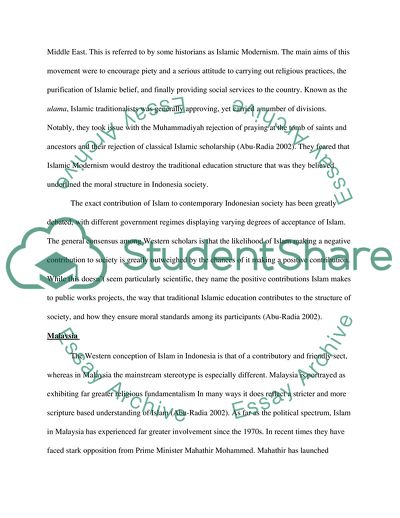Cite this document
(Islam in Southeast Asia Essay Example | Topics and Well Written Essays - 1250 words, n.d.)
Islam in Southeast Asia Essay Example | Topics and Well Written Essays - 1250 words. https://studentshare.org/religion-and-theology/1728875-the-islam-in-southeast-asia
Islam in Southeast Asia Essay Example | Topics and Well Written Essays - 1250 words. https://studentshare.org/religion-and-theology/1728875-the-islam-in-southeast-asia
(Islam in Southeast Asia Essay Example | Topics and Well Written Essays - 1250 Words)
Islam in Southeast Asia Essay Example | Topics and Well Written Essays - 1250 Words. https://studentshare.org/religion-and-theology/1728875-the-islam-in-southeast-asia.
Islam in Southeast Asia Essay Example | Topics and Well Written Essays - 1250 Words. https://studentshare.org/religion-and-theology/1728875-the-islam-in-southeast-asia.
“Islam in Southeast Asia Essay Example | Topics and Well Written Essays - 1250 Words”. https://studentshare.org/religion-and-theology/1728875-the-islam-in-southeast-asia.


